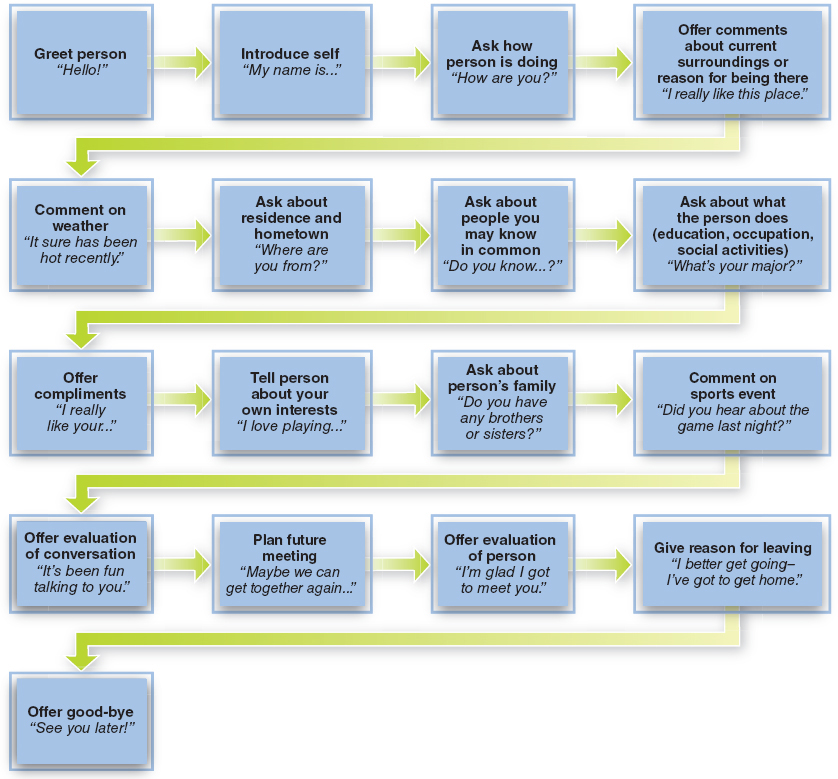6.2.6 Crafting Conversations
Printed Page 190
Crafting Conversations
A fifth function served by language is that it allows us to craft conversations. Language meanings, thoughts, names, and acts don’t happen in the abstract; they occur within conversations. Although each of us intuitively knows what a conversation is, scholars suggest four characteristics fundamental to conversation (Nofsinger, 1999). First, conversations are interactive. At least two people must participate in the exchange for it to count as a conversation, and participants must take turns exchanging messages.
Second, conversations are locally managed. Local management means that we make decisions regarding who gets to speak when, and for how long, each time we exchange turns. This makes conversation different from other verbal exchanges such as debate, in which the order and length of turns are decided before the event begins, and drama, in which people speak words that have been written down in advance.
Third, conversation is universal. Conversation forms the foundation for most forms of interpersonal communication and for social organization generally. Our relationships and our places in society are created and maintained through conversations.
Fourth, conversations often adhere to scripts—rigidly structured patterns of talk. This is especially true in first encounters, when you are trying to reduce other people’s uncertainty. For example, the topics that college students discuss when they first meet often follows a set script. Communication researcher Kathy Kellermann (1991) conducted several studies looking at the first conversations of college students and found that 95 percent of the topic changes followed the same pattern regardless of gender, age, race, or geographic region. (See figure 6.1.) This suggests that a critical aspect of appropriately constructing conversations is grasping and following relevant conversational scripts.
Does the fact that we frequently use scripts to guide our conversations mean this type of communication is inauthentic? If you expect more from an exchange than a prepackaged response, scripted communication may strike you as such. However, communication scripts allow us to relevantly and efficiently exchange greetings, respond to simple questions and answers, trade pleasantries, and get to know people in a preliminary fashion without putting much active thought into our communication. This saves us from mental exertion and allows us to focus our energy on more involved or important interpersonal encounters.

Figure 6.1 Conversational Pattern